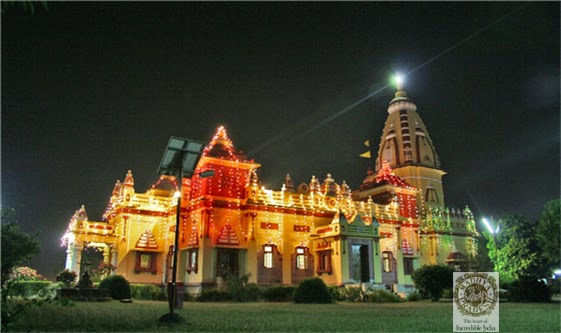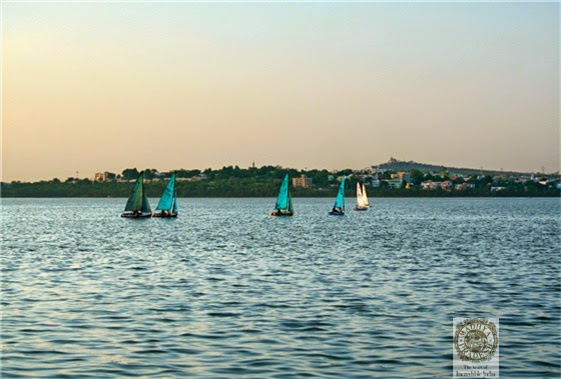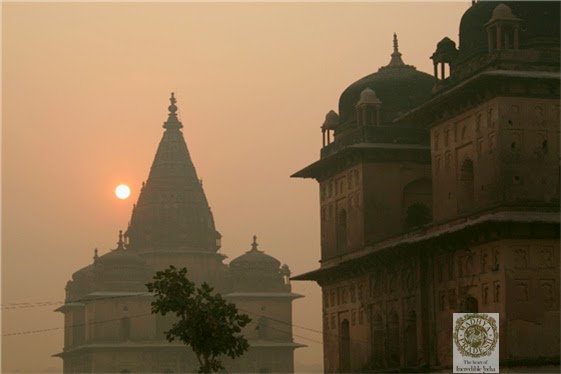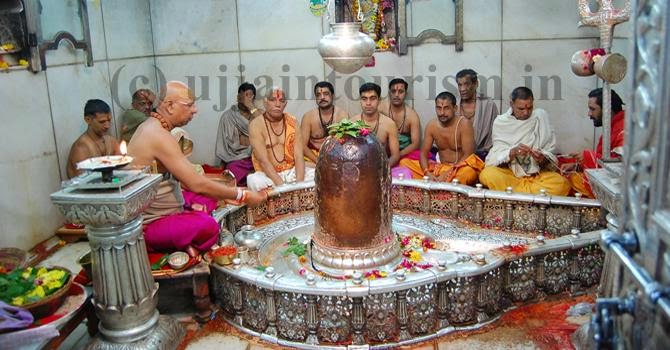Bhopal vacation destinations are well known for their authentic imperativeness and eminence. The city of Bhopal serves as the capital of the Indian condition of Madhya Pradesh . The eminent city of the Nawabs, Bhopal is a conversion of the rich types of craftsmanship, custom and society. In spite of the fact that the city of Bhopal is modernizing at an expanding velocity, it still has figured out how to keep its past superbness. The city is likewise connected with spots of recorded enthusiasm to the sightseers. The city has got a blended populace after different organizations and religion however collective congruity continues right up 'til today. The city was imagined and established by Raja Bhoja around the 11 th century AD.
Bhopal city is settled in excess of seven slopes along the banks of two lovely lakes. The old customary walled city is throbbing particularly around the chowk region where the greater part of the vacation destinations of Bhopal are. There are mosques, lakes, craftsmanship displays and historical centers with an incredible gathering that summon specific enthusiasm toward Bhopal. Construction modeling saw a re-understanding and experimentation with the combination of occidental and oriental style in a few spots.
Giving an one of a kind sample ever, Bhopal has been governed progressively by four eras of Begums which implies that it has been managed by monarchs. Under these begums the city created a ton with enhanced seepage framework, postal framework, routes and other fundamental foundation. The begums had likewise built excellent landmarks that are compositionally rich and are spots of traveler enthusiasm toward Bhopal.
Places to See in Bhopal
Birla Museum
All through the length and broadness ?of Madhya Pradesh you will run over multitudinous displays and galleries that reflect the rich social legacy of the area. A portion of the critical historical centers in the state merit an exceptional notice and one of those is the Birla Museum. Birla Museum is an archeological display that initiated existence in the year 1971. The historical center has a tremendous mixed bag and accumulation of curios and leftovers from the ancient period. Here you can get a flash of the antiques and devices of the Neolithic and Paleolithic Age.
Gohar Mahal Bhopal
Arranged behind the well known Shaukat Mahal - Gohar Mahal is spotted on the edge of the glorious Upper Lake. The spot is one of the must-see spots in Bhopal. The Mahal was implicit the memory of Gohar Begum - the first female leader of Bhopal. The castle was implicit 1820 which showcases the magnificent structural virtuoso of the time, making it an immaculate amalgam of Mughal and Hindu construction modeling. In spite of the way that the Gohar Mahal is not productively kept up, the porches of this royal residence still reflect its superb appearance and depict the wonderful days of the yore. This verifiable house holds a critical hugeness for the state. Endeavors are on to remodel the castle and restore its one of a kind brilliance.
Gallery of Mankind Bhopal
Gallery of Mankind Bhopal is a tribute to the tribal group of the nation. It is one of the few places in the whole world that has enormous accumulations hailing from the ancient time. The historical center is spread over a limitless zone of two hundred sections of land of arrive on the Shamla slopes. The display is an outside show of different tribal ancient rarities and examples hailing from the tribal towns in India. It is a remarkable terminus that holds a limitless library that incorporates sound and feature chronicles other than incalculable ethnographic examples. The gallery has been renamed as "Indira Gandhi Rashtriya Manav Sanghralaya" after a legit push to restore the antiquated tribal society.
Archeological Museum in Bhopal
The archeological exhibition hall in Bhopal is considered as an issue legacy of the state. The spot holds a mind blowing gathering of models, canvases and relics of India. The historical center is arranged close to the Lower Lake and is kept open for guests, understudies and archeologists who wish to visit and examining the curios here kept here.
The relics put away in this exhibition hall are not quite the same as those found in different foundations. The spot principally has the Bagh Cave artworks, carvings and statues that offer an understanding into the rich social legacy of Madhya Pradesh. The spot additionally houses old religious statues of antiquated times from diverse domains and kingdoms of the nation.
Bharat Bhavan - Bhopal
Bharat Bhavan is a multi-workmanship self-governing historical center arranged in Bhopal, Madhya Pradesh. The spot is thought to be a core for visual expressions and foundation for performing. On seeing the spot, one will find that the arranging has been eminently done and gives a genuine visual impression of substantialness.
The exhibition offers intuitive exercises in visual, performing and vocal expressions. The spot is thought to be a flourishing place for contemporary craftsmanship and has won a few awards. It is an unquestionable requirement see place for any craftsmanship aficionado. In addition, every now and then the exhibition holds different craftsmanship presentations to showcase the nation's ability. The spot is amazingly kept up and all the exercises are attempted by the administration.
Sadar Manzil Bhopal
The city of Bhopal is stamped with eminent engineering miracles and Sadar Manzil holds a noticeable spot. Sadar Manzil is found nearby the Royal Enclave that served as an issue court for the decision leader of the city.
The spot is built with red blocks that provide for it an alluring advance. The grand passage is totally cut in wood that prompts a little door. The primary story has an enormous patio gallery whilst the second story characteristics has four vaults, one in each one corner. The main carpet and the ground carpet have an arrangement of roomy rooms. Sadar Manzil draws in sufficient number of vacationers who wish to view the creative and engineering excellence of the spot.
Lakshmi Narayan Temple Bhopal
Developed on the highest point of Arera Hills, the Lakshmi Narayan Temple in Bhopal transmits a devout atmosphere. Otherwise called Birla Mandir, the sanctuary is committed to the renowned Goddess of riches - Lakshmi.
Based on an uneven landscape, the sanctuary charges a surrounding sight over the city of Bhopal. Separated from Vishnu and Lakshmi, the sanctuary likewise reveres Shiva and Parvati. The serene air offers perfect solace to the guests. The sanctuary is additionally a historical center where you would discover excellent accumulations of different models that hail twelve centuries back. The spot has a notable appeal which makes it an unquestionable requirement see peculiarity while going to Bhopal.
Shaukat Mahal
Shaukat Mahal is the amalgamation of Islamic and Hindu structural planning making it an uncommon mix that you would not find anyplace else. The building is spotted in the occupied Chowk zone of Bhopal. The Mahal is a delicate melange of the occidental and oriental styles of structural engineering and workmanship. It is said that the spot has been planned and brought about by a Frenchman.
Shaukat Mahal portrays a greater amount of Islamic style in its construction modeling. Likewise, the post Renaissance, gothic and medieval styles have mixed congruously to make this spot novel. The building is built with complicated botanical examples on the dividers that showcase the genuine delightful engineering work.
Lower Lake Bhopal
The Lower Lake of Bhopal mainly known as "Chhota Talab" is placed in the peaceful surroundings of the radiant slopes. The lake is differentiated from the Upper Lake by an over-scaffold. The lake gives a tasteful feel for which it has constantly beaten the rundown of touring places in Bhopal. The lake likewise gives a chance to escapade water games, for example, cruising, engine sailing, paddling and so on.
Upper Lake Bhopal
The Upper Lake of Bhopal is an enormous water store that lies in the Western piece of the city. The lake is thought to be the greatest lake in Madhya Pradesh. Seeing this "Bada Talaab" one goes totally dumbfounded. The lake is the real man-made drinking hotspot for the occupants of the city.
This lovely water supply is said to have existed since the eleventh century. It is has a tremendous earthen bank fabricated over the Kolans River. The lake is gone by for touring as well as for standard convictions as local people think its waters have the ability to recuperate skin afflictions. Separated from this, it is a most loved spot among experience sweethearts as it offers different games exercises, for example, paddling, paddling, and speedboats to humor themselves.
Van Vihar National Park
Neighboring Upper Lake, Van Vihar National Park is an imperative touring spot of Bhopal. Created and kept up by the zoological office, the recreation center is spread generally over 4.43 sq km of range. It started to be in the year 1983. This national park is an entirely ensured and vigilantly observed zone. The national park has thick vegetation which is a suitable environment for some types of creatures and winged animals.
Van Vihar National Park has in excess of 300 types of creatures, reptiles and winged animals. The significant fascination of this national park is the white tiger. Individuals from everywhere throughout the world visit this spot to see this extraordinary creature. The recreation center gimmicks an excellent scene in the midst of the fantastic universe of creatures and winged animals.
Taj-ul-Masjid Bhopal
Developed in the nineteenth century, this Islamic mosque is arranged in Bhopal. The Taj-ul-Masjid stands tall with pink blocks and rich structural engineering making it a standout amongst the most critical touring spots in the city.
The development of this mosque was carried out under the directions of Begum Shah Jehan. With the progression of time, the mosque's superbness started to wane.the mosque has now been restored by the legislature and it pulls in huge number of Islamic explorers from all around the nation. With a huge water tank in the inside, the mosque has a gigantic yard that can suit endless fans amid their petitions to God. The lobbies and columns are vigorously improved, which are truth be told the true wonders of the mosque.
Moti Masjid Bhopal
Moti Masjid is a lovely mosque of Bhopal city went by hundreds and a great many Muslims consistently from all corners of the nation. The mosque is a critical point of interest of Bhopal and a radiant sanctuary constructed by the ruler Sikander Begum in the year 1860.
Sikander Begum was viewed as a freed lady of that time. She has assembled numerous essential structures and landmarks amid her rule and the Moti Masjid was one of them. This mosque happened to turn into an immense journey place for the Muslims and till date they visit it for offering their ?petitions to God. The spot is not difficult to get to through the neighborhood transportation in the city.
Sanchi Stupa Bhopal
This spot needn't bother with any presentation and is maybe a well-known and must-see landmark in India as well as over the globe. Sanchi Stupa has an incredible authentic association with King Ashoka and in addition Gautam Buddha. The spot is said to be one of the most established stone structures of India and it illuminates Buddhist remainders.
It is a standout amongst the most gone by Buddhist locales other than the Ashoka Pillar. The grand finishing and marvelously raised Buddhist points of interest at the spot makes this site worth going to. In the gigantic circular arches, you will have the capacity to witness Buddha's remainders. The spot is basically overwhelming and depicts the antiquated history of Buddhism in the nation.




.jpg)
.jpg)
.jpg)
.jpg)





.jpg)
.jpg)

